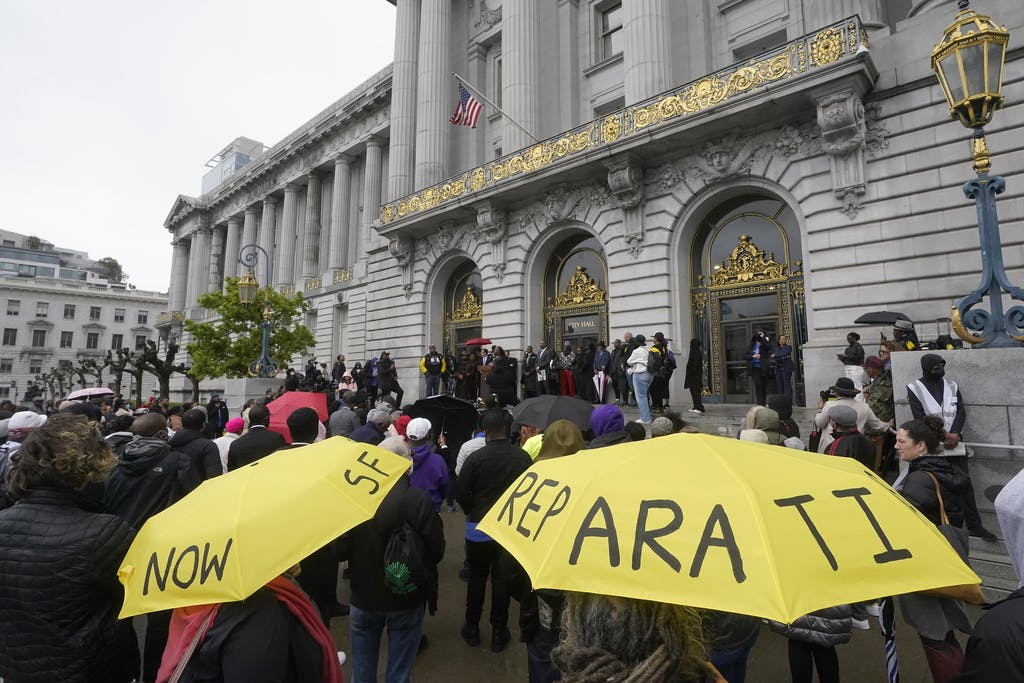San Francisco Approves Fantasy Reparations Plan That Would Pay Black Residents $5 Million, Let Them Buy a House for $1
Black San Franciscans would also be entitled to a lifelong annual salary of at least $97,000 as compensation, won’t have to pay taxes, and will have all their debts forgiven.

San Francisco’s ambitious plan to pay billions of dollars in reparations to its Black Americans is spawning fierce debate about whether the plan, however unrealistic, is the best use of taxpayer dollars.
Reparations have long been discussed in an esoteric way as a means to compensate Black Americans for slavery and other past injustices, but they’ve never advanced through any meaningful government process. Now, San Francisco has approved an outline of a plan, though observers say it’s so expensive it has little chance of ever being funded.
On Tuesday, the board of supervisors unanimously accepted the recommendations made by the city’s African American Reparations Advisory Committee, which has been working on its draft since late 2020.
The reparations committee plans to release its final report in June, and the board of supervisors will revisit the issue toward the end of the year. It is yet to be determined how the reparations payments would be folded into the city budget, if at all. Two supervisors — Matt Dorsey and Shamann Walton — support a ballot referendum so that voters could decide whether to adopt the policy.
The committee’s chairman, Eric McDonnell, told the Washington Post that “there wasn’t a math formula” behind the plan, but rather a search for “a significant enough investment in families to put them on this path to economic well-being, growth, and vitality.”
The draft recommends a one-time payment of $5 million, a guaranteed income of $97,000 for the next 250 years, forgiveness of all debts, exemption from paying taxes, and the ability to purchase a home for just $1.
(An analysis by the conservative Hoover Foundation found that the plan would cost $600,000 per non-Black San Francisco household.)
In order to receive payments, citizens must prove that they are at least 18 years of age and have identified themselves as Black on government documents for at least 10 years.
Other requirements include proving that one has lived in the city for at least 13 years between 1940 and 1996, attended the city’s public schools, or been affected by the war on drugs, among others.
The total cost has yet to be determined, but even the San Francisco chapter of the NAACP says the $5 million payment is unnecessary. The group’s chairman, the Reverend Amos Brown, believes community investment is a better use of the money.
“We strongly believe that creating and funding programs that can improve the lives of those who have been impacted by racism and discrimination is the best path forward toward equality and justice,” Reverend Brown said in a statement.
Rather than a one-off payment, he suggests putting the money toward five key areas: education, economic development, housing, healthcare, and investment in the historically Black Fillmore District, which was impacted by urban development in the 20th century, resulting in the displacement of thousands of Black families.
Currently, just 6 percent of the city’s population is Black, though 40 percent of San Francisco’s homeless population is Black.
Much of the criticism of reparations as a general proposal centers around the fact that the taxpayers who would bear the financial burden of the policy never owned slaves, while those who would receive payments were themselves never enslaved.
In 1988, President Reagan signed into law reparations payments for Asian-Americans who themselves suffered internment during World War II. Those who were interred received $20,000.
The eligibility requirements for San Francisco’s reparations program were also criticized by a prominent political and social commentator, Tariq Nasheed. While Mr. Nasheed supports reparations, he does not believe they should be race-based, but rather based on one’s ability to trace lineage to someone who was enslaved.
The state of California had its own reparations commission. Governor Newsom signed a bill in 2020 that established the group, saying that “while there is still so much work to do to unravel this legacy, these pieces of legislation are important steps in the right direction to building a more inclusive and equitable future for all.”
The task force proposed giving $233,000 to Black Californians who could directly trace their lineage to enslaved people.
Illinois also has a reparations task force, along with the cities of Boston, St. Louis, Asheville, and others.
Providence, Rhode Island, used federal funds from Covid relief to pay reparations to Black and indigenous residents. The money was also used for affordable housing units, and the Democratic mayor, Jorge Elorza, said “reparations can take a lot of different shapes.”

